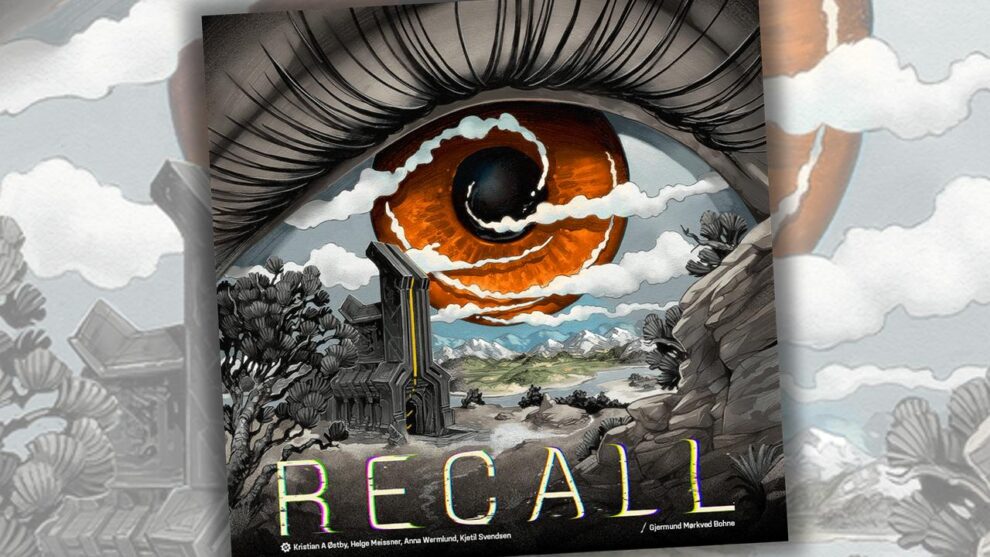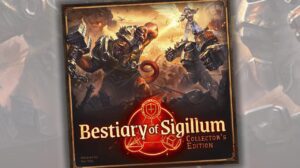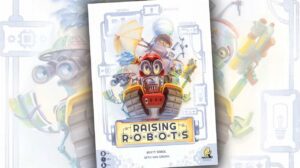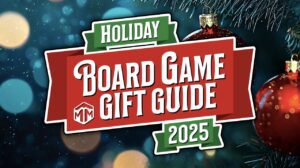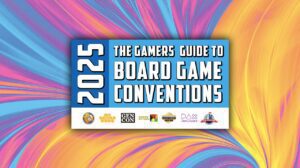Disclosure: Meeple Mountain received a free copy of this product in exchange for an honest, unbiased review. This review is not intended to be an endorsement.
The top of the SPIEL Essen 2025 Hotness list on Board Game Geek for about two weeks was the new exploration Eurogame Recall. One reason the game was so hot: the same people who designed Recall previously gave us Revive, a top-100 title on BGG and one of the best strategy games I’ve played since COVID.
My buddy John and I had the chance to demo Recall on the final day of this year’s SPIEL, and one of the game’s designers, Kristian Amundsen Østby, happened to be the person teaching our demo. We played about half of a normal game, and afterwards John verbalized what I was thinking: “Recall…yeah, Recall is pretty good.”
I picked up a review copy at the show and got four more full plays done when I got the game back home. The verdict hasn’t changed…Recall is, in fact, pretty good.
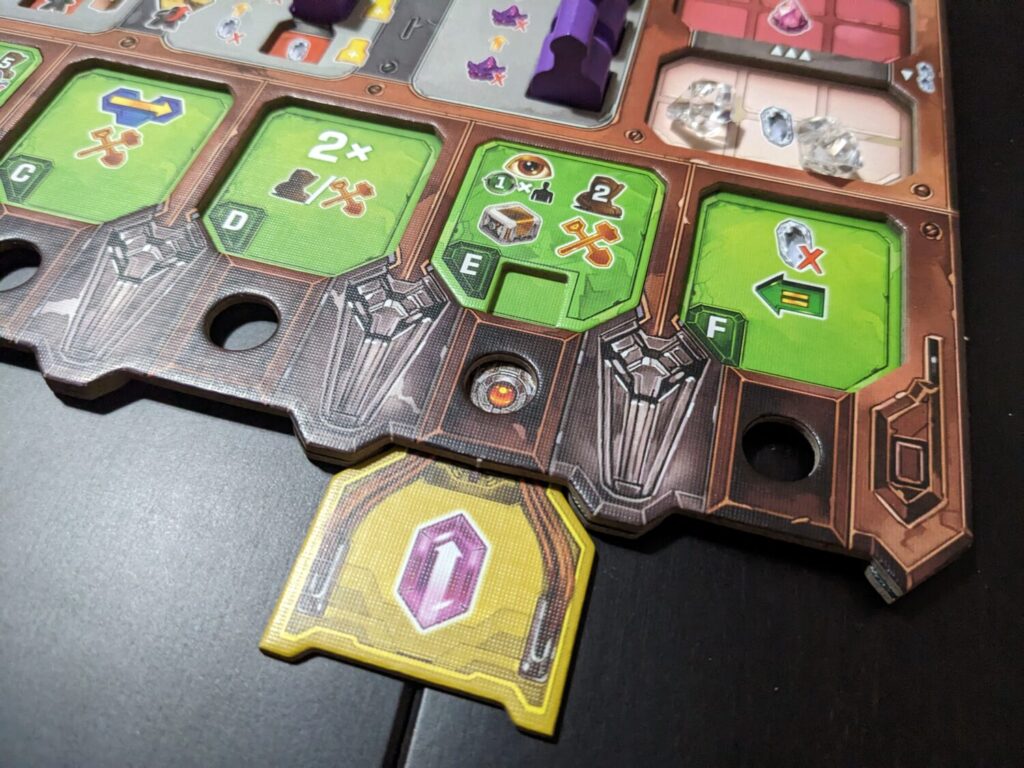
The Key is the Keys
Recall is an action selection game for 1-4 players that takes about 30 minutes per player. More importantly, Recall is NOT Revive 1.5, or Revive Light, or Revive Anything. Recall is absolutely a standalone game, which is important to call out, because despite everyone’s best efforts to frame it differently, there really isn’t a reason to compare Recall to Revive save for the mention of the designers behind both games: Østby, Helge Meissner, Anna Wermlund, and Kjetil Svendsen.
Revive, to me, is a card game. There is exploration, there are buildings, there are factions with asymmetric powers, but the action is driven by playing cards, and acquiring better cards than those available in a player’s starting hand, to gather resources and trigger bonuses on a player’s personal board. I love Revive, but even during the Recall demo, Revive never entered my mind or offered comparison points in almost any way. (OK, maybe one way: the crate items in Revive are also used in Recall—albeit with slightly different tokens—so it was comforting to see the crate icon in Recall knowing that it was a way to gather minor bonuses from time to time.)
Recall’s action is driven by the use of small keycards that can be physically inserted into the bottom of a player’s board to trigger one of six actions. Players have 17 turns (broken into 13 main turns and four special turns) to score the most points by building structures on a map of tiles that must be explored to be discovered, excavating ability stones, gathering “relicubes”, and building relationships with other local tribes that grant powers to players who invest time in each of those other tribes. (And, by “building relationships”, I mean going up tracks. Eurogame trappings abound here, like a comfy sweater in those cold, winter months.)
On a turn, players use one of their keycards to trigger an action. The game’s six starting actions are all basic stuff: move around, explore new tiles, construct buildings, or combinations of those actions. But by scoring points during play, players move up the score track to unlock action tiles that replace the basic actions. By the time a player has scored about 30 points, they will have upgraded all their actions to become juicier versions of the basic stuff.
I am surprised to report that upgrading an action from “move tribespeople two spaces and build” to “move tribespeople three spaces and build twice” is such an exciting thing, but somehow Recall makes that a reality. In fact, almost everything in Recall has been done in a bunch of other games, some of which were released earlier this very year. The medium-weight Euro category is chock full of games with tracks, small bonuses, free actions, and upgradable powers. But Recall does this with aplomb, for two simple reasons.

The first reason is the keycards. Each player begins the game with two white keycards, both of which are so basic that they don’t trigger any additional bonuses. But the next level up, yellow keycards, grant players small bonuses before or after taking their main action: a victory point, a choice of a point or a tribesperson, maybe an upgrade action to boost one of the game’s crystals from white to red, or red to purple. The keys get sexier from there, with green keycards replacing yellow ones with better bonuses, and some sick bonuses on the gray keycards that replace the green ones.
So, there’s that. But excavating ability stones and going up each of the game’s three tracks can grant players ability stones that are used to take free actions each turn. Suddenly, your simple “move two spaces and develop” action can quickly become upgraded and boosted with two, three, maybe more free actions that lead to the kinds of combos all Eurogame players love.
That’s because the combination of these ability stones and the game’s character and gadget system is so much fun. Each player starts with one of 14 tribe abilities, which can subtly break open a game for the owner of each power. There are 18 gadgets; each player begins with one, then has the chance to acquire as many as three additional gadgets, and gadgets can be triggered for free by placing an ability stone on the gadget. For players with the right number of stones (you see what I did there), gadgets can be triggered again later by spending two stones for the gadget’s second use, three for the third, etc.
Going up each track means that players can access another tribe’s ability as well. By the end of play, you might have access to four different tribe powers (a starting power plus the three track powers) and a whole gaggle of ability stones, which led to some ridiculous combos…all in a package that doesn’t overstay its welcome with long turns because the gadget and tribe powers are usually painless.
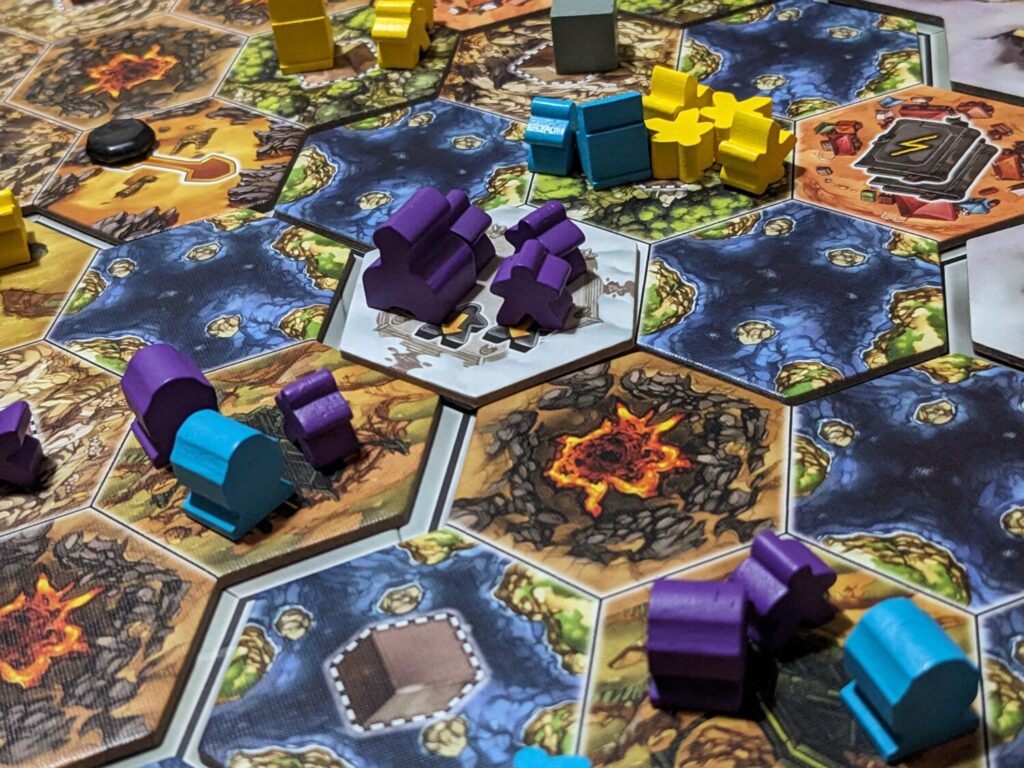
Which Leaves Us in a Nice Place
Recall reminded me a bit about my feelings about other strong Euros from 2025, such as Ayar: Children of the Sun, Endeavor: Deep Sea, Tianxia, and Minos: Dawn of the Bronze Age. The medium-weight strategy game category is so crowded—how does any single title stand out?
In the case of Recall, that’s a tougher question. The gameplay is solid across the board. I think it will land on a number of top-10 lists for outlets that cover similar games, but at no point did I feel like the game was going to crack my all-time faves or a permanent spot in my collection. It’s really good, but it’s never great.
I do love the game’s scoring system. The game’s main scoring categories are outlined on six cards (always the same in each game, which already limits its replayability), but those cards are broken into three sections and require players to choose a specialization at three distinct points during the game. Those choices come with a small benefit but an interesting choice: which of these two cards am I going to specialize in, which will boost my end game score? (All players will always score all six main scoring objectives, regardless of specialization choices.)
This makes Recall a pretty easy game to teach—no matter what I tell you, focus on the six scoring cards and your 15-point personal objective card, because these are the main ways to score points during the endgame. Interaction is light here; everything is a race, but players can build on any space even if other players are already on a hex by paying a very minor price in tribespeople. There is no combat or stabby play available. For most of the players in my network, that’s fine, but I wish there were more ways to disrupt other players who appear to have an edge.
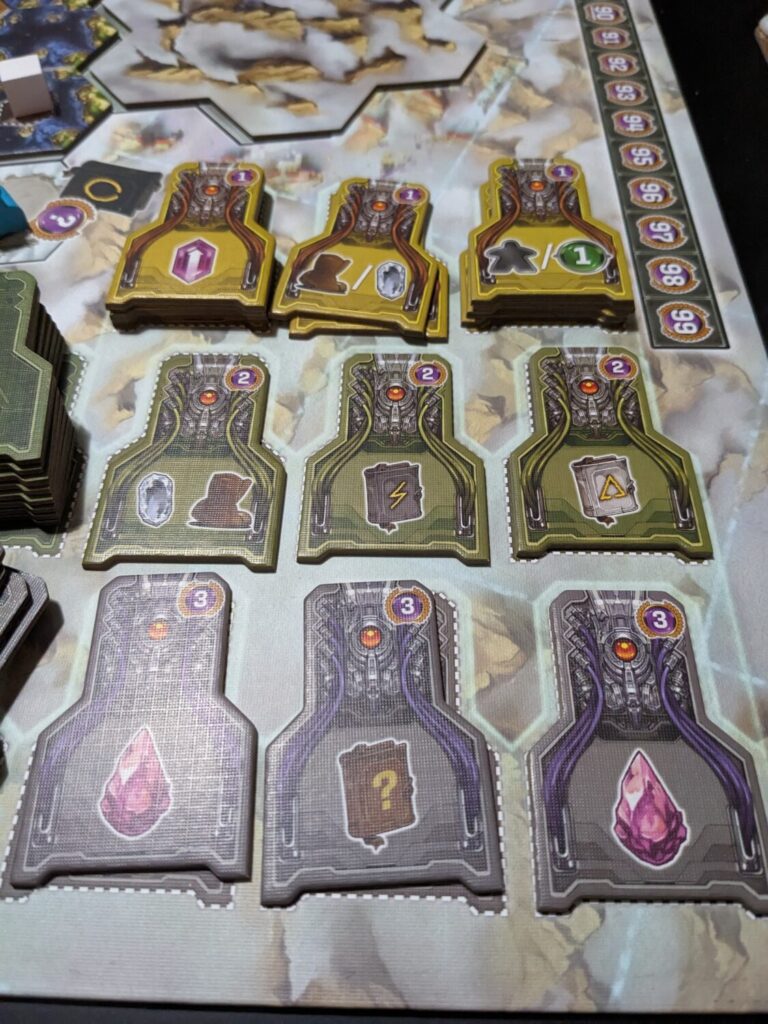
A few other issues took hold during my plays. Recall doesn’t have a runaway leader problem, but in games where one player is ahead during the game by 20+ points, they are almost certainly going to win. In part, this is due to the nature of the upgraded actions: that player had access to the game’s best actions earlier than other players, meaning they were probably taking more efficient actions for a quarter, a third, maybe even half of the game.
Players always start on the same edge spaces at the right end of the board; this makes Recall feel like it has some scripted opening moves, depending on the orientation of the board’s first two exploration tiles. Even during my demo, Østby seemed to indicate that starting the game as the fourth player will usually lead to one player considering the Reveal action, which scores points based on the presence of other players near adjacent, undiscovered tiles. That action would be nearly worthless for the first or second player, but good enough for the fourth player to score four points (one for each other player on an adjacent hex), which exceeds the threshold to acquire the first action upgrade on the score track.
The game is called Recall…because the income action is called Recall. But the income action was less interesting than I had hoped, with players removing keycards to take red-shaded actions revealed after building new structures. For each removed key, a player can take one income item, such as a new tribesperson, crystals, crates, or points. The income itself ultimately wasn’t that interesting, but timing up when to take the Recall action was very interesting, especially late in the game when considering ways to take useful actions to wrap up the game.
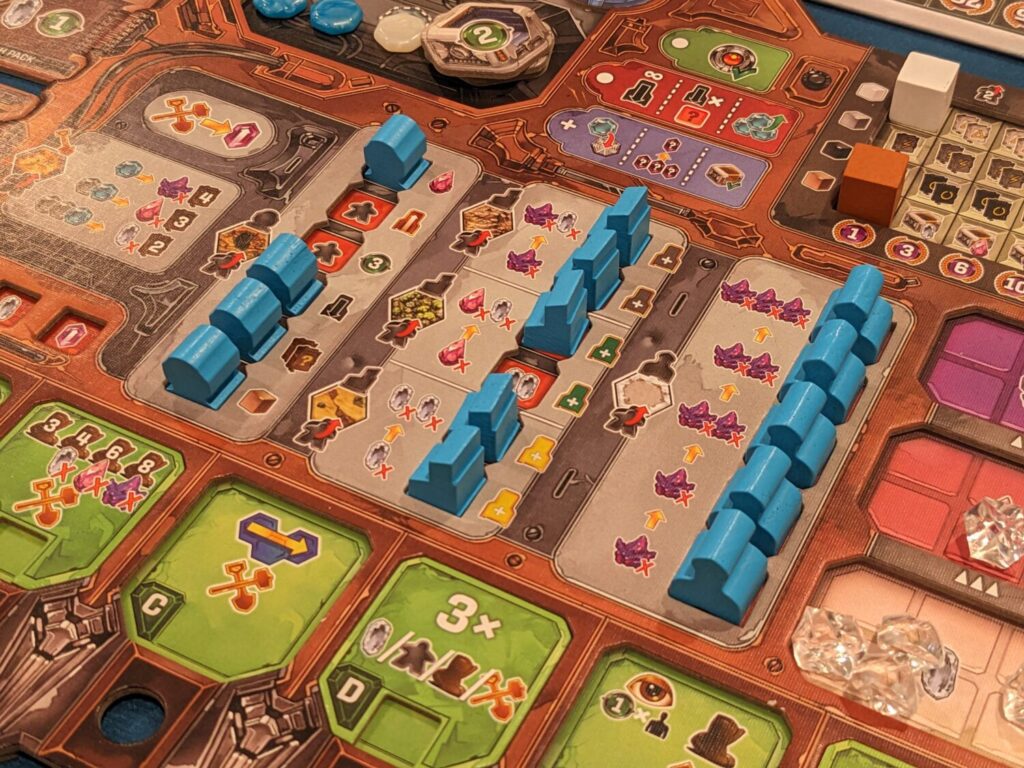
Recall ≠ Revive
I had a great time playing Recall and, a bit like Revive, I’m guessing an expansion will arrive sooner than later. By my fourth play, Recall was beginning to feel a bit “samey”; not a bad thing, but Recall feels like a game for the current generation of players who like to chase the hotness, making it a game that would hit a table 5-10 times but doesn’t feel like a game I will be reaching for consistently years from now.
Recall does everything right—great rulebook, icons that feel second-nature even after the second play, runs about two hours at the full player count, has a solo mode that acknowledges its multiplayer solitaire nature. There’s also a simple app that can be used to randomly determine the tribes and gadgets that are available through the three non-player tribes available in each game, and it also tracks the scores of other players globally who used the same factions to give you a sense of how others scored using the same tribe. (I used it for three of my four plays.)
The wow moments are here, but it already feels like Recall has peaked with my game groups. I did two solo games, a three-player game, and a four-player game for this review, and I had fun with the game at all counts, but notably no single player asked to try it a second time. I will personally look to table this at the max player count, since I liked the game more with a crowded board.
As a production, Recall is fine. Players in each game noted that the basic, clear crystal tokens could be deluxified to match the states that they are upgraded into; for example, white crystals graduate to red crystals, and red morphs into purple as a crystal’s level advances. But everyone I played with wished Alion had just given us white, red and purple crystals to use as spendable resources.
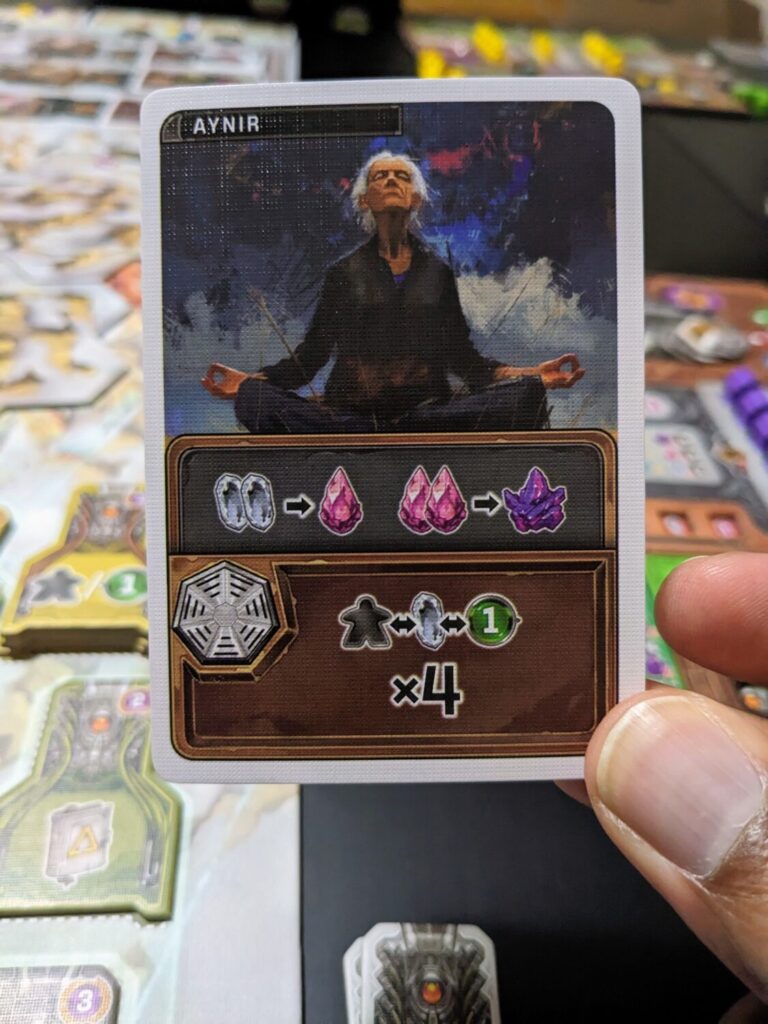
This certainly keeps the overall price point down, but players have become “bougie” in their desire for a luxury product. Recall is absolutely not a luxury product. I was fine with that, but I was surprised at how many people called this out.
The game’s only criminal misgiving? There are no player aids. (Remember: every game needs a player aid.)
In the scheme of the icon-heavy, medium-weight Eurogame, Recall is relatively icon-light, or features icons like a shovel and a boot to do actions that I’ve already described in this article. (If you can’t figure out what the boot does, maybe board games are not for you!) Still, everyone wondered where the player aids were, particularly when it came to the unique icons on the tribe cards or on some of the personal objective cards. The back cover of the manual has everything needed, but there’s only one copy of it.
Recall is fun and very much worth your time, whether you are a Revive fan or not. The games are truly different, so owning one won’t preclude you from owning the other. If exploration Euros are your thing, give Recall a look!


